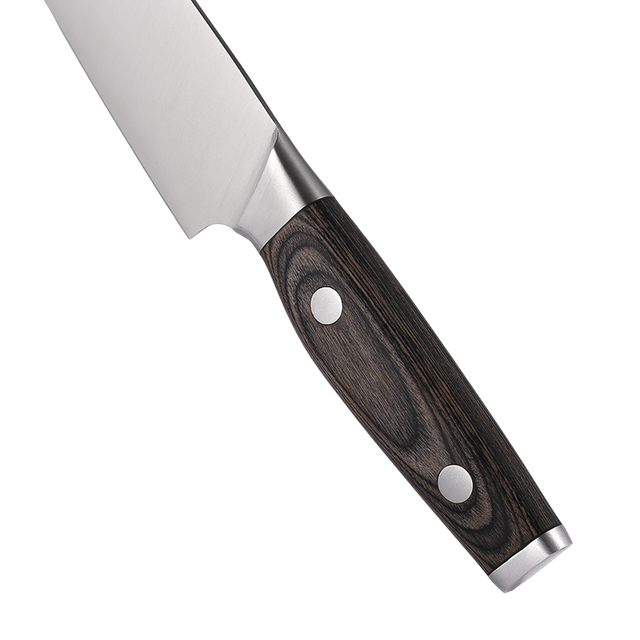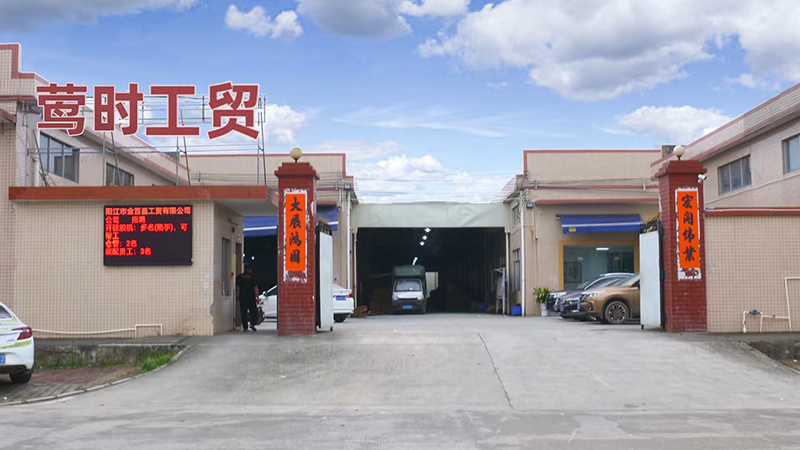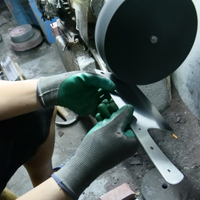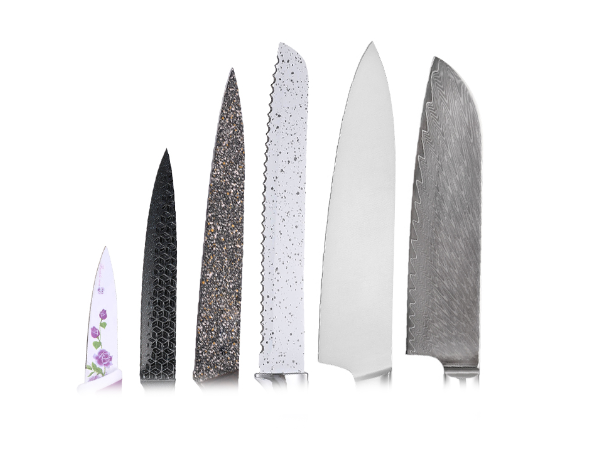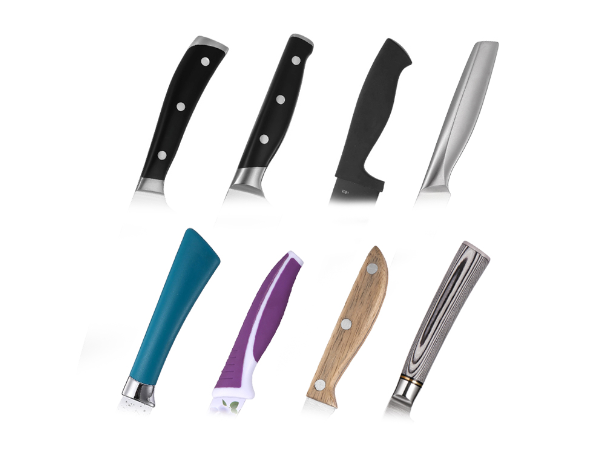1. Wooden Handles:
Olive wood, walnut, colored wood, oak, acacia, ash wood, rosewood, sandalwood, pine, rubber wood, mango wood, birch, beech, teak, maple, cherry wood.
Pros: Excellent feel, hard texture, lightweight, wear-resistant, corrosion-resistant, aesthetically pleasing.
Cons: Prone to warping when exposed to moisture, flammable.
2. Plastic Handles:
ABS, PP, POM, acrylic, TPR.
Pros: Lightweight, waterproof, easy to clean, low production cost, customize in various colors and shapes.
Cons: Prone to aging, easily deformed.
3. Stainless Steel Handles:
430, 304.
Pros: Corrosion-resistant, wear-resistant.
Cons: Heavier, high thermal conductivity, which may affect comfort during use.



